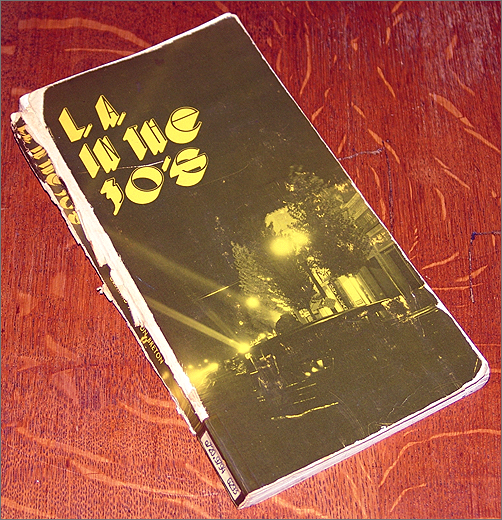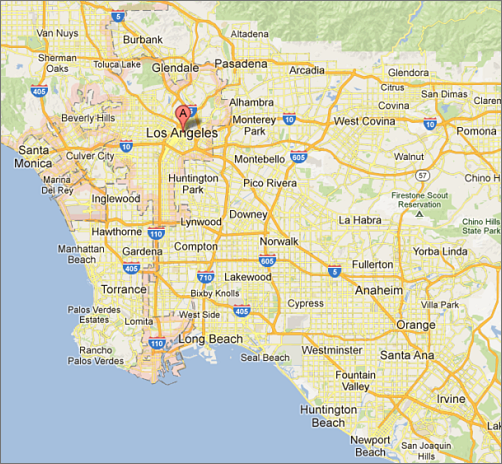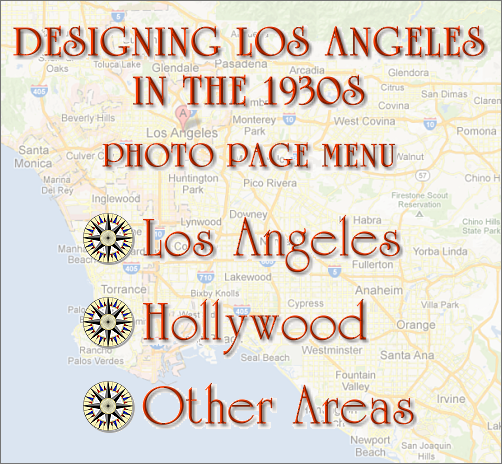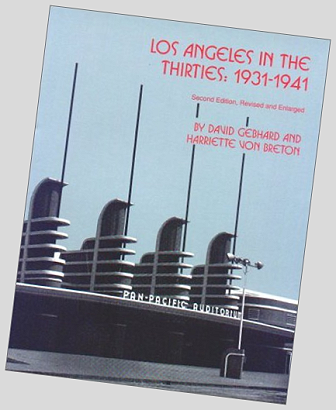
|
By H. P. Oliver A few words of introduction . . . My novels are set in California during the years between WWI and WWII for several reasons, but two of those reasons stand out above the rest. First, the period between the wars was a glamorous time and California hosted many scenic locales. Glamour and scenery combine to make colorful backdrops for exciting stories. The second main reason for my choice of period and location is based on the old adage that says one writes best about what one knows best. While I'm no historian and I certainly don't consider myself an expert on California history, I've lived here all my life and find the state's history fascinating. As a result, my research library is full to overflowing with books about people and places from the Golden State's past. I mention all of this because one of the books in my research library I rely on heavily as a visual resource provided both the inspiration and the images for this feature article. That book is L.A. IN THE THIRTIES by David Gebhard and Harriette Von Breton. My copy is a first edition from 1975, but the book is still in print. See the resource panel at the bottom of this page for the details. While L.A. IN THE THIRTIES is primarily an architectural study, it also does an excellent job of addressing L.A.'s growth-the primary factor responsible for the abundance of amazing Art Deco, Streamline and Moderne' buildings of the era. For me, personally, the book's greatest assets are the wonderful period photos illustrating what LA really looked like in the 1930s. |
| This is my original copy of LA IN THE THIRTIES--a first edition published in 1975. It's condition indicates the extent to which I've found it useful! If you have an interest in Los Angeles history or classic film, this book is an absolute MUST for your library! |  |
|
DESIGNING LOS ANGELES in the 1930s From its roots as El Pueblo de Nuestra Seņora de Los Angeles in the 1780s, and on through the beginnings of the Twentieth Century, LA County grew steadily in area and population. Then, between 1920 and 1930, Los Angeles boomed! The city's population more than doubled from 576,673 in 1920 to 1,238,048 in 1930. In that time LA went from the tenth largest city in the U.S. to the fifth largest. But Los Angeles's growth didn't end there. The city's population increased by more than another quarter million people during the decade of the 1930s! What is unique about the phenomenal growth of Los Angeles during this period are the physical characteristics of its expansion. In most major metropolitan areas like San Francisco, New York and Chicago, growth was vertical. That is to say the homes, businesses and public buildings needed to support new residents grew in height because space for horizontal growth was limited. In Los Angeles, however, the available space or expansion was seemingly endless, so rather than developing a densely populated urban center, Los Angeles expanded outward in all directions from its center. To the west of downtown Los Angeles the communities of Culver City and Santa Monica began to grow. To the north, the San Fernando Valley was host to regional centers like Burbank, Glendale, Van Nuys, and Pasadena. East of LA many small communities sprang up from Monterey Park to Pomona. The vast area south of downtown Los Angeles saw the arrival of the regional towns of Huntington Park, Inglewood, Downey, Compton, Torrance, and Long Beach. All of these communities and many more spread out to become the Los Angeles Metropolitan Area. |
| This modern Google map clearly shows the horizontal direction of L.A.'s expansion. The "A" marker indicates downtown Los Angeles. When that area was first populated few of the other communities shown on this map existed. |  |
|
At the same time LA was growing by leaps and bounds, a new and progressive architectural style was gaining popularity throughout the United States. Today we typically refer to this new design theme as "Art Deco," but it is more accurate to say the architectural designs of the 1930s were Streamline and Moderne'-styles that were a step beyond the true Art Deco themes of the 1920s. The men and women who pioneered the Streamline/Moderne' designs in Los Angeles are today seen as legends in architectural circles-designers like Frank Lloyd Wright, S. Charles Lee, Richard J. Neutra, and Rudolph Schindler. There's a good deal more to be said on this subject-like how new building materials and L.A.'s reliance on the automobile for transportation influenced southern California building designs-but I'll leave those subjects to the experts, like the authors of LA in the 1930s, David Gebhard and Harriette Von Breton. From the viewpoint of a writer creating fiction set in Los Angeles during the 1930s, the greatest importance of the era's architectural designs is in the colorful backgrounds they provide for period stories. Being able to see those backgrounds in period images is of immeasurable value to me when it's time to paint word pictures that give readers a true feeling for the settings in my stories. I should also add that, while most of the photos you'll see in this feature were taken around the same time as the building they depict were built, some were taken many years later. The dates you'll find in the photo captions are when the buildings were finished, not necessarily when the image was made. |
| Now it's time for our virtual tour of Los Angeles in the 1930s. To provide some organization to the photos you'll see, I've divided them into the geographical areas listed on the right. To begin your tour, click an area. Links from the area photo pages will return you to this menu. Enjoy your trip back to 1930s LA! |  |
|
RESOURCE PANEL The period photos in this feature article are just sample of those you'll find on the pages of LA IN THE 1930S. Having come from that book, those images are covered by copyrights owned by the authors and/or publisher. We gratefully acknowledge their courtesy in allowing us to reproduce the photos appearing in this article. If what you've seen in this feature has given you a taste for more of the same, you're in luck! The second revised edition of LA IN THE 1930S (published by Hennessey & Ingalls in 1989) is still in print. Clicking HERE will take you to its product page at Amazon.com. For those interested in southern California history, classic films (many of which feature buildings of the era), or the decade of the '30s in general, LA IN THE 1930S is definitely a "must read." I heartily recommend securing your copy while the book is still available! |
 |
![]()